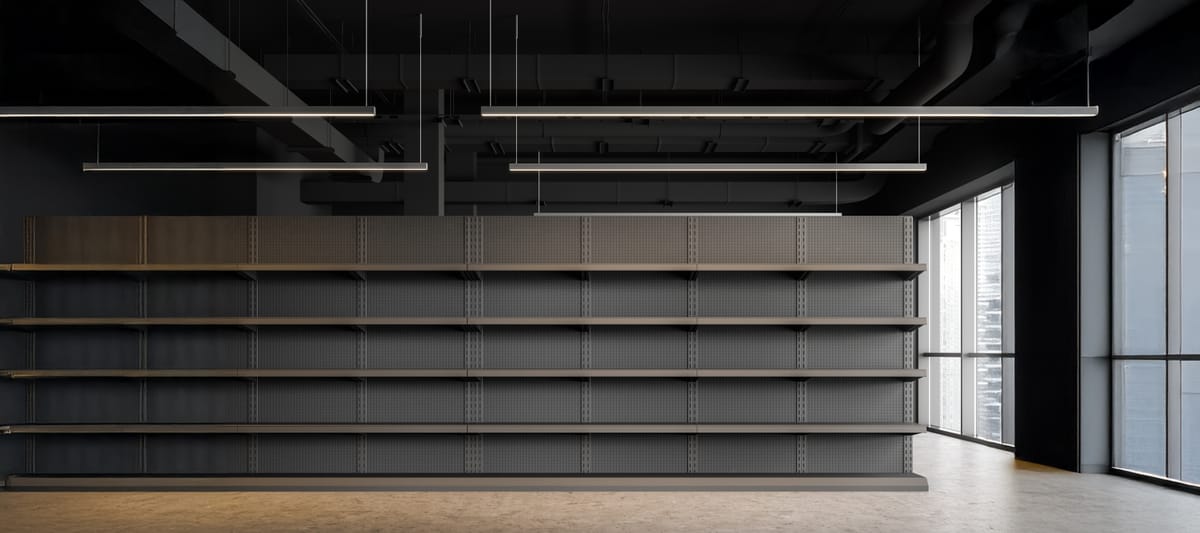Supermarket Equipment Auctions: A Buyer's Guide to Refrigeration, Prep, and Checkout Systems

Walking into a supermarket equipment auction can feel overwhelming. Rows of commercial refrigerators, industrial ovens, and checkout systems represent thousands of dollars in potential investments. For grocery store owners, restaurant operators, and food service businesses, these auctions offer an incredible opportunity to acquire quality equipment at competitive prices. But without the right knowledge, you could end up with costly mistakes.
At Grafe Auction, we've facilitated dozens of supermarket auctions, from major chains like Publix and Kroger to independent grocers across the country. Through these experiences, we've learned that buyers who succeed focus their attention on three critical categories: refrigeration systems, food prep equipment, and checkout systems. These represent the largest investments in any supermarket operation, and they require the most careful evaluation. This guide will walk you through exactly what to look for in each category, helping you bid with confidence and avoid expensive surprises.
Why These Three Categories Matter Most
Refrigeration, prep equipment, and checkout systems aren't just the most visible elements of a supermarket. They're also the most expensive to replace and the most critical to daily operations. In our analysis of 25 supermarket auctions from last year, these categories consistently commanded the highest prices and attracted the most competitive bidding. A single walk-in freezer can sell for $14,000 or more, while commercial ovens regularly fetch prices exceeding $20,000. Understanding what makes these items valuable, and what red flags to watch for, can mean the difference between a smart investment and a money pit. The knowledge you gain here will help you evaluate equipment with the same expertise we bring to every auction we conduct.

Commercial Refrigeration Equipment: What to Look For
Refrigeration represents the single largest equipment investment in most supermarket operations. These systems run 24/7, consume significant energy, and require substantial maintenance. Getting this category right at auction can save you tens of thousands of dollars, but mistakes here are equally expensive.
Key Inspection Points Across All Refrigeration
Walk-in units: Verify BTU capacity matches your needs. Check insulation quality and panel condition. Inspect door seals for gaps that waste energy. Identify compressor type (scroll, reciprocating, or screw) as this affects repair costs. Look for rust indicating moisture problems. Verify refrigerant type compliance with EPA regulations.
Display cases: Glass condition matters most, as replacement panels are costly. Test all lighting functionality. Check temperature consistency. Brands like True, Hillphoenix, and Hussmann hold value due to parts availability. Consider energy efficiency, as older units can consume triple the electricity of modern equivalents.
Reach-in units: Commercial models feature heavier insulation and more powerful compressors than residential units. Solid doors save energy while glass doors aid merchandising. Test door operation repeatedly and check for ice buildup indicating thermostat issues.
Critical reminder: Transportation costs for refrigeration are substantial. Walk-in coolers often cost $1,500-$2,000 to move and install. Get moving quotes before bidding to know your true total cost.

Food Prep Equipment: Ensuring Quality and Functionality
Food preparation equipment powers supermarket bakeries, delis, and prepared food sections. Unlike refrigeration where functionality is binary, prep equipment reveals its true condition through subtle wear patterns that separate smart purchases from expensive mistakes.
Commercial Ovens and High-Value Cooking Equipment
Commercial ovens command premium prices for good reason. At our Publix auctions, a Baxter OV500G2-EE oven sold for $22,000, while a roll-in double rack oven fetched $8,500. An Erika Automat dough rounder and divider commanded $8,000, demonstrating the specialized value of bakery equipment.
Roll-in rack ovens maximize efficiency for high-volume operations. Convection ovens provide consistent baking results. Verify voltage requirements before bidding, as three-phase power is common but may require electrical upgrades. Gas ovens cost less to operate but need proper ventilation, while electric models require adequate service capacity. Look for clean interiors, intact door seals, and functional controls as maintenance indicators.
Stainless Steel Work Surfaces and Specialized Equipment
Stainless steel quality varies dramatically. Lower gauge numbers mean thicker, more durable material. An 18-gauge table outlasts 22-gauge alternatives. Check for welded joints over bolted connections, NSF certification for health department compliance, and three-compartment sinks if required by your local regulations.
Meat processing equipment demands attention to blade condition and motor function. At our auctions, a Biro meat saw sold for $5,500 and a Randell blast chiller commanded $5,500, reflecting their value for food safety compliance. Grinders and slicers should show minimal cutting surface wear.
Bakery supplies often represent exceptional auction value. From our Publix auctions alone, 1,582 sheet pans sold at fractions of retail cost. Bulk lots of pans, utensils, and containers deliver significant savings for buyers purchasing larger quantities.
Essential Inspection Points
Check electrical requirements on data plates for voltage, amperage, and phase compatibility. Three-phase equipment won't work in single-phase facilities without expensive modifications. Excessive grease buildup, burnt wiring, or worn components signal neglect. Missing shelves, racks, or doors add replacement costs to your bid. Clean equipment with normal wear suggests proper maintenance and longer useful life.
Checkout and Point-of-Sale Systems
Checkout systems represent the final critical category for supermarket equipment buyers. These systems handle customer transactions, making them essential for operations. However, technology changes rapidly in this category, creating both opportunities and pitfalls for auction buyers.
What to Look For in Checkout Systems
When evaluating POS hardware at auction, verify that systems can run current software and integrate with modern payment processing. Card reader compliance is non-negotiable: EMV chip readers and contactless payment support are now standard. Older magnetic-stripe-only readers won't meet payment card industry standards. Test receipt printers during preview if possible, as thermal print heads are expensive to replace. Cash drawers should open smoothly with working locks and undamaged compartments.
Physical checkout counters affect customer flow and employee efficiency. Examine construction for durability, ensure conveyor belts run smoothly, and verify adequate bagging space. Modular systems offer reconfiguration flexibility, while fixed installations provide stability. Check ADA compliance if you're subject to accessibility regulations.
Smart Bidding for Supermarket Equipment
Success at equipment auctions requires preparation and discipline. Review auction catalogs thoroughly on our events page and attend preview days when possible. Research comparable market prices to establish your bidding range.
Calculate total cost of ownership, not just the hammer price. Include buyer's premium, transportation, installation, and potential repairs. Heavy commercial equipment requires professional movers, and walk-in coolers need technical installation. Don't get caught in bidding wars beyond your maximum. Know your removal deadlines and have logistics planned before you win.
For detailed auction preparation strategies, see our guide on 10 Tips for Success in Online Auctions: A Beginner's Guide.
Making Smart Equipment Investments
Buying supermarket equipment at auction offers tremendous opportunity for savvy buyers who do their homework. Refrigeration systems, food prep equipment, and checkout systems represent the biggest investments and require the most careful evaluation. By understanding what makes these items valuable, what red flags to avoid, and how to bid strategically, you position yourself to acquire quality commercial equipment at significant savings.
The knowledge you've gained here comes from our direct experience facilitating dozens of supermarket auctions. We've seen buyers save thousands of dollars on equipment purchases by following these principles. We've also seen expensive mistakes when buyers skip inspection steps or fail to calculate total costs. Your success depends on preparation, careful evaluation, and strategic bidding.
Ready to put this knowledge into practice? Visit our events page to browse current and upcoming supermarket auctions. We regularly add new events, and you can browse by state to find opportunities near you. Subscribe to our newsletter to receive auction updates directly, ensuring you never miss opportunities to acquire quality equipment.
For more insights on supermarket equipment auctions, explore our related articles on Supermarket Auctions: A Review of Last Year's Trends and 5 Things to Expect at Your First Online Auction. If you have questions about specific equipment or upcoming auctions, contact us directly. At Grafe Auction, we're committed to helping buyers make informed decisions and successful equipment investments.


